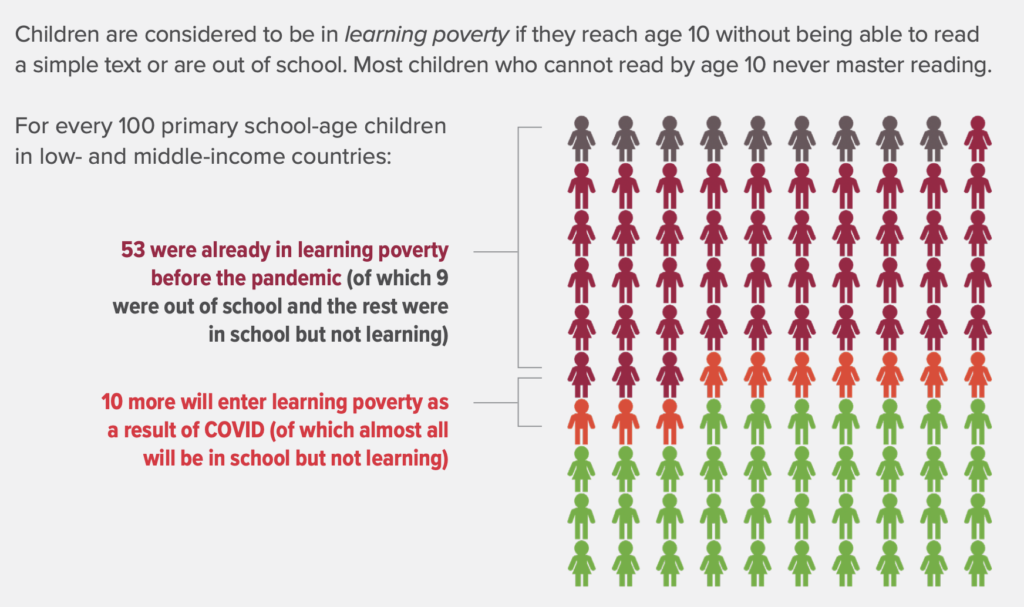October was a big month! Here’s a quick rundown of the major pieces related to girls’ education, in case you were too busy keeping your eye on other things the past few weeks (which, truthfully, we’d understand!).
Four major reports on (girls’) education were published this month:
First, the Global Education Monitoring Report came out with their annual Gender Review, which looks at “25 years of efforts for gender equality in education.” It describes the “generational leap in access to education for girls” alongside gains in learning outcomes. The report highlights the need for improvement in removing gender stereotypes and bias from learning materials, making schools safer (less violent) for both boys and girls, providing comprehensive sexuality education, and seeking balanced representation of women in education leadership.
Lest we get too excited about the progress in girls’ education that has been made, the second report, a white paper from the Save Our Future campaign, underscores the crisis education systems faced before the pandemic, which has only deepened and exacerbated inequalities since. The report advocates for seven key actions: (1) prioritize reopening schools; (2) make education inclusive, engaging, and adaptive; (3) strengthen the education workforce; (4) focus education technology where it is proven to be effective and most equitable; (5) protect education budgets; (6) mobilize international resources; and (7) improve evidence generation, coordination, alignment, and effectiveness.

Third, the Global Education Evidence Advisory Panel released a report outlining “Smart Buys” for improving learning in low- and middle income countries. The panel deems giving information on the benefits, costs, and quality of education as a “great” buy. “Good” buys include providing structured lesson plans with linked materials and teacher training and support, targeting instruction based on learning level, reducing travel time to school, providing merit-based scholarships, using adaptive learning software, and providing pre-primary education. With respect to gender, the report underscores how general interventions can support girls, and the need for more research on the effectiveness of programs that specifically target girls, especially adolescents. It also highlights some promising interventions with low evidence and some “bad” buys — please do check out the full report, which draws on analysis comparing 150 interventions with a “Learning-Adjusted Years of Schooling” metric.
Lastly, the ASER Centre launched a first wave of data looking at the status of education in India amidst COVID-19. They find that both boys and girls have shifted from private to government schools, because families can no longer afford private schools and/or those schools have shut down. Encouragingly, a significant proportion of students are getting support from parents and engaging in some learning activities at home. That said, more educated parents are providing more home support and engaging more with school teachers, which means that children without educated parents suffered doubly, receiving less parental and less school support.
How is girls’ education affected by COVID-19? Here’s a helpful framework drawing on evidence from past crises. Long story short, COVID-19 is putting progress in peril, as argued in The Global Girlhood Report. A new report from UNICEF, UNESCO, and the World Bank found that children in the poorest countries have lost nearly four months of schooling since the start of the pandemic. But if you want some optimism, look no further than these articles:
- COVID-19 is an opportunity to reset education. Here are 4 ways how
- Are The Risks Of Reopening Schools Exaggerated? (Especially in Poorer Countries with Younger Populations?)
- A Better Education for All During—and After—the COVID-19 Pandemic
- Can new forms of parent engagement be an education game changer post-COVID-19?
- Covid-19 can be a boon, if we do the right things for children, as we reopen schools
COVID-19 also provides an opportunity to underscore the importance of investments in childcare services to drive economic recovery. Childcare offers a triple dividend—for children’s health and education, for women (re-)entering the labor force, and for driving economic recovery. This month, Spring Impact released a report profiling 11 support programs for home-based child care providers. The report (also summarized in this blog) offers a conceptual model of the attributes of successful support programs for home based childcare and draws out important insights and recommendations for funders, policymakers, and other early childhood care and education stakeholders.
But wait, there’s more! If your brain isn’t completely saturated already, here are a few other things we recommend checking out:
- Our very own Erin Ganju shares wisdom on the role of foundations during the COVID-19 crisis, the importance of collaboration, and evaluating your organization’s unique strengths.
- Why we should be paying attention to more than just parents and teachers when it comes to improving development for young children (and why you should thank your older sisters!) — working paper and blog
- Why are North and South India so different on gender?
- Lifting bans on pregnant girls in school is unlikely to increase fertility rates
- The US role in advancing gender equality globally through girls’ education
Finally, if we want to make progress on girls’ education, it is sensible to examine and advocate for policies that are going to help us do so. The Center for Global Development has laid out an attempt at a Girl’s Education Policy Index, and is asking for input. Please do weigh-in and improve this helpful resource.
